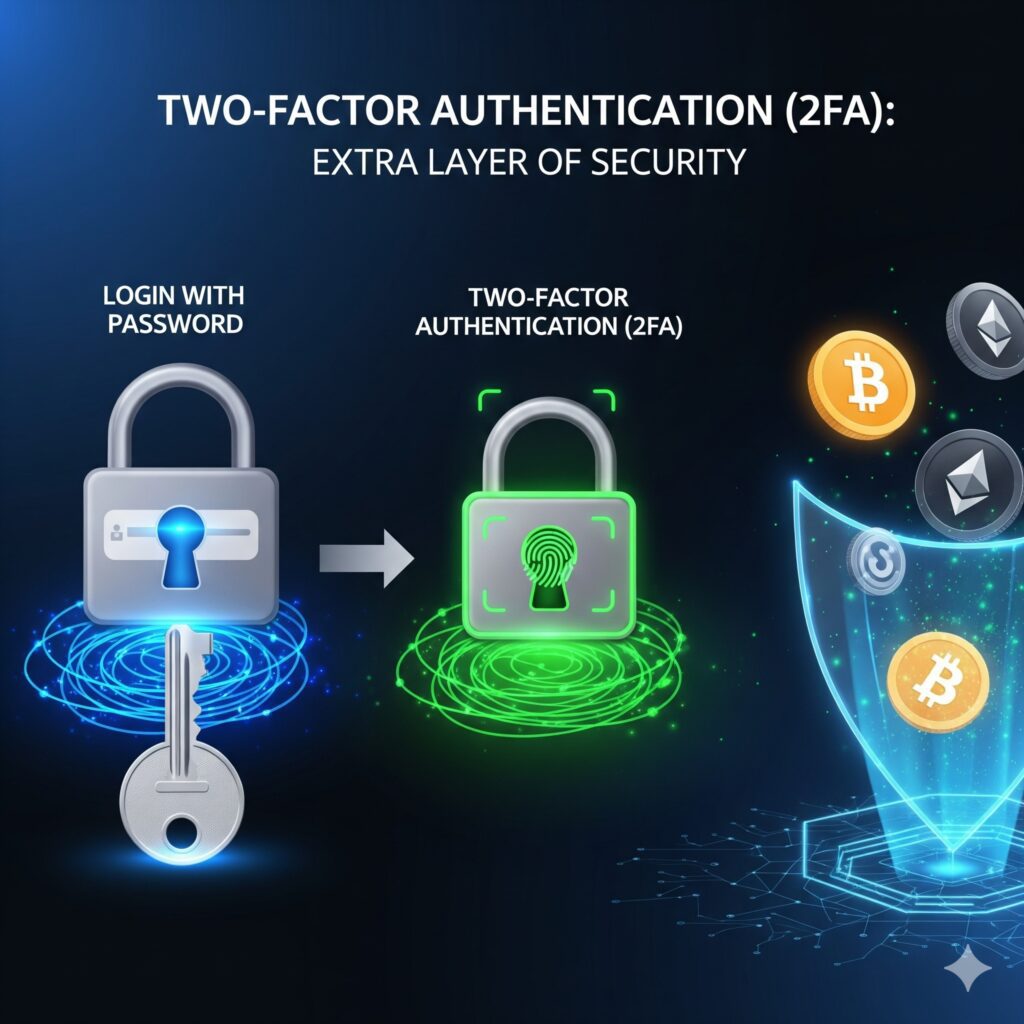Hardware Wallets: Your Cold Storage Fortress
- July 24, 2025
- 5:33 pm
- Chinmay J
All about Hardware Wallets
What is a Hardware Wallet?
- A hardware wallet is a physical electronic device that stores your private keys in a secure, offline environment. Think of it like a high-security vault for your crypto keys, completely isolated from the internet. It’s designed to keep your private keys safe even if your computer is compromised by malware.
How Do Hardware Wallets Work?
- Key Generation: When you set up a hardware wallet, it generates a new private key and stores it securely within the device. This private key is never exposed to your computer or the internet.
- Transaction Signing: When you want to send cryptocurrency, you use the hardware wallet to sign the transaction. The transaction details are sent to the hardware wallet, where you review them on the device’s screen. If you approve the transaction, the hardware wallet uses its private key to digitally sign the transaction. The signed transaction is then sent back to your computer, which broadcasts it to the blockchain network.
- Offline Operation: Because the private key is stored offline, hackers cannot access it remotely, even if they gain control of your computer.
Benefits of Using a Hardware Wallet
- Enhanced Security: Provides the highest level of security for your private keys, protecting them from hacking, malware, and phishing attacks.
- Offline Storage: Keeps your private keys offline, away from the internet and potential threats.
- Resistance to Phishing: Prevents phishing attacks by requiring physical confirmation of transactions on the device’s screen. You can see the transaction details and verify the recipient address before signing.
- Immunity to Keyloggers: Keyloggers cannot capture your private key because it never leaves the device.
Popular Hardware Wallet Brands
- Ledger: A popular hardware wallet brand offering various models like the Ledger Nano S Plus and Ledger Nano X. Ledger supports a wide range of cryptocurrencies and offers a user-friendly interface. Ledger has faced scrutiny for a past data breach that exposed customer contact information (though not private keys).
- Trezor: Another well-known hardware wallet brand, offering models like the Trezor One and Trezor Model T. Trezor is known for its open-source design and strong security features.
- SafePal: A hardware wallet company backed by Binance, offering the SafePal S1 hardware wallet. It’s known for being a more affordable option.
- For detailed comparison of top 10 hardware wallets, click here .
Recommended Hardware Wallets:
Setting Up a Hardware Wallet
- Purchase from a Reputable Source: Buy directly from the manufacturer’s website or an authorized reseller such as Amazon. Our links are directly affiliated to Amazon products.
- Unboxing and Verification: Inspect the packaging for any signs of tampering. Verify the authenticity of the device following the manufacturer’s instructions.
- Initialization: Connect the hardware wallet to your computer and follow the on-screen instructions to initialize the device.
- PIN Code Setup: Choose a strong PIN code (usually 4-8 digits) to protect your device.
- Seed Phrase Generation: The hardware wallet will generate a 12-24 word seed phrase. Write it down carefully on the provided recovery sheet.
- Seed Phrase Backup: Store the seed phrase in a safe, secure location, away from your hardware wallet. Consider using a metal seed phrase storage device.
- Verification: Some hardware wallets will ask you to verify your seed phrase to ensure you have written it down correctly.
Using a Hardware Wallet
- Connecting to Your Computer: Connect the hardware wallet to your computer via USB cable.
- Unlocking the Device: Enter your PIN code to unlock the device.
- Installing Wallet Apps: Install the wallet apps for the cryptocurrencies you want to manage on the hardware wallet.
- Sending Crypto: Open the wallet app, enter the recipient address and amount, and review the transaction details on the hardware wallet’s screen. Confirm the transaction by pressing the buttons on the device.
- Receiving Crypto: Use the wallet app to generate a receiving address for your cryptocurrency. Share this address with the sender.
Best Practices for Hardware Wallet Security
- Buy Directly from the Manufacturer: Purchase your hardware wallet directly from the manufacturer or an authorized reseller to avoid counterfeit devices. Our website links directly to Amazon for all the brands.
- Verify the Device: Verify the authenticity of the device by checking the serial number and security features.
- Keep Firmware Updated: Regularly update the firmware of your hardware wallet to patch security vulnerabilities.
- Protect Your PIN Code: Choose a strong PIN code and keep it secret.
- Secure Your Seed Phrase: Store your seed phrase in a safe place, away from your hardware wallet. Consider using a metal seed phrase storage device.
- Use a Strong Password on Your Computer: Protect your computer with a strong password and keep your operating system and antivirus software up to date.
Knowledge Test
- What is a hardware wallet and how does it enhance security?
- Explain how a hardware wallet signs transactions.
- Name three popular hardware wallet brands.
- Why is it important to purchase a hardware wallet directly from the manufacturer?
- What is the purpose of the PIN code on a hardware wallet?
Answers
- Offline storage of private keys protects from online threats.
- Signs transactions on the device using the private key.
- Ledger, Trezor, SafePal.
- Avoid tampered/counterfeit devices.
- Protects the device from unauthorized physical access.


